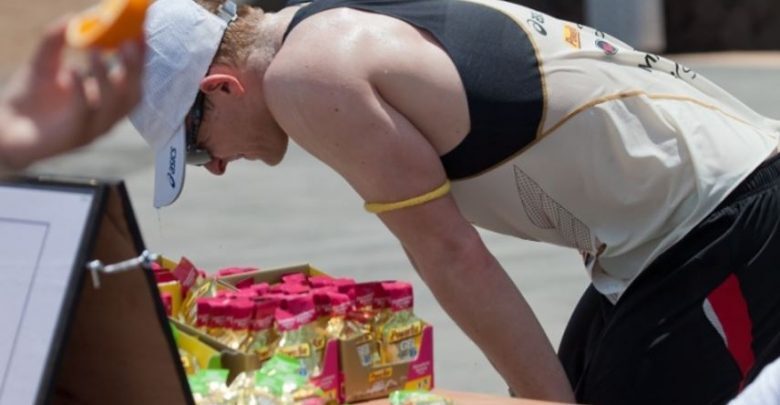Do you train your stomach for competitions?

Just as we train our body and our mind to face competition, we must not forget this aspect and more if we have already had a bad experience.
The glycogen deposits are reduced and it is very difficult to exceed the 2.500-3.000 kcal. In long distance tests it is impossible to finish a test of these characteristics without ingesting food. However many athletes suffer gastrointestinal discomfort due to difficulties in absorbing the food.
Our Collaborator Reebok Performance, tells us on this occasion Why do these types of moles appear and how can we train? to our stomach to avoid them on the day of the competition.
With a study it has been exposed that from an 30 to 50% of participants suffer discomfort gastrointestinal But in another conducted on one of the most demanding triathlons in the world of (Embrunman) in severe weather conditions, hup to an 93% incidence of gastrointestinal problems (study).
Why do the discomforts appear? Gastrointestinal
Most of the discomfort are due to gastric emptying and this depends on several factors being the most important:
- Intensity of the exercise: It is possibly the most important aspect since depending on the intensity of the exercise a different amount of HC can be assimilated, but even at low intensity it is very difficult to overcome the 90-100gr / h (study)
- Fiber of food: Fiber is very good for health, but we must take it away from competitions even one or two days before the competition (study)
- Osmolarity: The sodium concentration will depend on the rate of sweating, but an amount of 0,4 to 1,15 grams / L is considered adequate. However lower values will facilitate it (study)
- Amount of fats and proteins: The ingestion of fats and proteins in food during the test makes gastric emptying difficult (study)
- Temperature: The perfect temperature of the liquid is approximately 15ºC, so the further we move away, the greater the difficulties for gastric emptying (study)
- Food density: HC drinks and gels produce less gastrointestinal discomfort than bars, in addition to the latter at high intensities can produce a decrease in the performance of a 3,9% (study)
Training to avoid gastrointestinal discomfort
Just as we train our body and our mind to face competition, we must not forget this aspect and more if we have already had a bad experience.
1º Stomach capacity: This organ is able to adapt to ingest large amounts of liquid or food, and can increase up to four times its size. In this way it has been demonstrated that the practice of these habits can increase the comfort of the stomach (study)
2º Sugar transporters: The absorption of carbohydrates occurs thanks to specific transporters and these limit the ability to pass into the blood. It has been possible to verify during 28 days comparing a group with low consumption of CH and another with high, that it is possible to increase the oxidation of ingested glucose by almost 10% only in the group that consumed high amounts of CH (study).
3º Type of diet: The type of diet can greatly influence the capacity of HC absorption during competition. If we use a low HC diet, the absorption of these during competition will be more limited
Recommendations:
- Simulate the nutritional strategy of the competition in some trainings (same amount of HC grams per hour, same type of energy drink and food, etc.)
- Train with large volumes of liquid or food (A good time could be after a meal) and especially in a race that is more difficult to assimilate
- Aincrease the content of HC in the diet in the previous weeks
- According to a recent study they can be enough two weeks to improve the absorption of HC and gastric emptying minimizing gastrointestinal discomfort
More information about Reebook Performance:
LOCATION AND CONTACT
Reebok Sports Club La Finca
Pº Sports Club, 4
28223 Pozuelo de Alarcón, Madrid
T
There are no previous results.




























